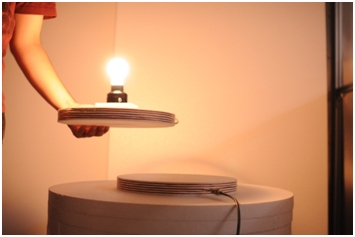
Let’s read his material about wireless power transfer!
First demonstrated by Nicholas Tesla in the 1890s, wireless power transfer is an innovative technology that has permeated major areas in the consumer and industrial electronic market.
The various forms of WPT include solar energy, microwaves, and magnetic energy. In this article, we will focus on wireless power transfer using magnetism and induction coils. The following offers an insight into the working principle, features, and applications.
Working principle
Wireless power transfer works on the inductive power transfer principle, as found in the conventional transformers. The only difference is that while in the transformer the two coils are in very close proximity and contain a ferrite material to increase the coupling, inductive chargers have an air gap between the two coils. The process follows the following procedure:
- The mains voltage is converted into alternating current, preferably, high-frequency AC
- This current (the high-frequency AC) is transferred to the coil via transmitter circuit. This AC induces a magnetic field in the transmitter coil.
- The induced magnetic field generates a current in the adjacent receiver coil.
However, in the earlier applications, the designers faced a challenge; the strength of a magnetic field decreases with distance. The decrease in strength is proportional to the square of the distance from the source. This made it difficult to regulate power and reduced energy efficiency.
To solve this, the designers introduced resonance. You acquire resonance by multiplying the capacitance of the plates attached to the ends of the coil with the coil inductance.
The introduction of resonators with the same frequency in the sources and receiver coil respectively ensures that the two systems couple magnetically, thus allowing for higher energy transfer efficiency. This means that the power transfer happens over an air gap without the need for metal or other material connection.
For this to happen, both the transmitter and the receiving coil must resonate at the same frequency. The generated AC is converted into direct current for charging the battery.
However, in cases where the two objects are far apart, power transfer can still be achieved through resonating the two coils at the same frequency. This eliminates the need for perfect alignment.
Greater power transfer distances can be achieved by introducing resonant repeaters between the two components.
Benefits
- Allows for charging of multiple devices. This is achieved by changing the coil geometry, as well as allocating large charging surface areas such as table tops and charging benches.
- High charging speeds: though at the moment wireless charging offers a slower charging rate than the wired option, advances in resonance and induction technology promises an increased charging rate and improved efficiency in the future
- Wireless power transfer allows for greater spatial freedom between the power source and the device. This means that the two do not have to be precisely aligned for power transfer.
- Eliminating charging cords enables engineers to make compact and watertight devices, thus maximising on safety, and varied use such as in deep-sea applications.
- Prevents corrosion and sparking by eliminating mechanical connectors and wired contacts
- Reduces costs associated with maintaining and replacing mechanical connectors
Applications
Industrial Applications: Wireless power transfer has seen tremendous applications and value addition to industries. The primary applications include wireless sensors on rotating shafts, wireless equipment charging and powering, and safe and watertight equipment through eliminating charging cords
Subsea applications: though subsea vehicles can self-navigate, human assistance is still required for power supply. Due to the rough terrain, as well as the distance, cabled conductors can prove to be a challenge. WPT comes in handy in these instances.
Charging mobile devices, unmanned aircraft, home appliances and electric vehicles: The charging system the smaller gadgets comes in the form of a charging pad and power benches, where the user places the device such as a mobile phone and electric toothbrushes.
Charging and operating medical implants such as subcutaneous drug supplies, pacemakers, and other implants. WPT, especially with high resonance allows convenient continual charging of these implants without the need for frequent surgeries and the inclusion of external charging ports.
Charging wearables: The convenience of wearables lies in the mobility and convenience. Considering that the wearer has to walk around, the primary problem thus is the charging. Wireless power transfer accords the convenience of charging by eliminating the requirement for cables and connectors
Marvin M.
It was all for today, do you have questions or remarks? Did you find it useful?


Great article
Wonderful explanation for a beginner like me. This wireless technology will do wonders in near future.
Please update me on all the developments.
May I ask the experts that how this technology differs with Levitation technology
In transmitter circuit did u use a half bridge or Full H bridge?